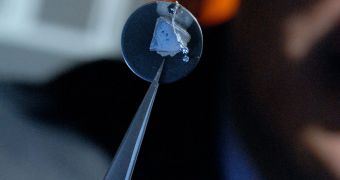Scientists are working on a new type of nanogenerator that could draw the necessary energy from flowing blood in the human body, by using the beating heart and pulsating blood vessels. Once completed, this new cellular engine could find various applications, even beyond medicine.
Zhong Lin Wang and colleagues at the Georgia Institute of Technology hope to be able to incorporate the new nanogenerator into biosensors, environmental monitoring devices and even personal electronics that will require no fuel source, internal or external.
It will produce its own electricity while immersed in biological fluids or other liquids, using ultrasonic waves as the energy source. So far, they achieved the nanogenerator effect in an array of nanowires that could produce as much as 4 watts/cubic centimeter.
"We are creating a portable, adaptable and cost-effective technology for powering small electronic devices," said Wang. "Our nanogenerator allows us to harvest or recycle energy from many sources."
"Our bodies are good at converting chemical energy from glucose into the mechanical energy of our muscles," added Wang. "These nanogenerators can take that mechanical energy and convert it to electrical energy for powering devices inside the body."
Thus far, the nanogenerator has only produced nanoamperes of power-too little for powering macroscopic devices. But Wang is confident his next prototype will produce microamperes, capable of powering wireless sensor network nodes.
"It sets a solid foundation for self-powering implantable and wireless nanodevices and nanosystems in biofluid and any other type of liquid," Wang and colleagues said.
"Our theoretically estimated power density is 1 to 4 W/cubic centimeter," said Wang. "Our next goal is to grow bigger nanowire arrays to raise the nanogenerators' current to microamperes, and to build a three-dimensional structure to raise the voltage to 0.5 V so that it can be used for powering devices."
To meet that goal, the researchers will have to learn how to control the precise length of grown nanowires. Too short and the wires will not reach the top zigzag electrode when they flex; too long and they will be permanently shorted out against the upper electrode. "Our last challenge will be finding an inexpensive way to package the nanogenerator," said Wang.

 14 DAY TRIAL //
14 DAY TRIAL //